RESEARCHES
Smart Vision & Robotic Sensing
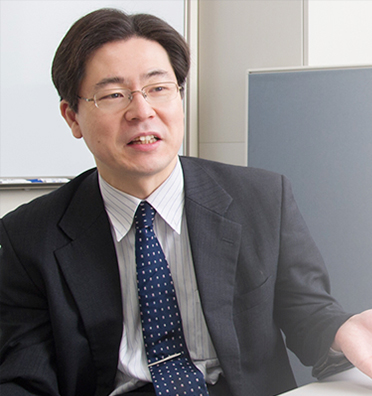
Professor, Robotics Laboratory
Smart Innovation Program, Graduate School of Advanced Science and Engineering
Hiroshima University
Smart Innovation Program, Graduate School of Advanced Science and Engineering
Hiroshima University
Idaku ISHII
- >> Research Contents
- In order to establish high-speed robot senses that are much faster than human senses, we are conducting research and development of information systems and devices that can achieve real-time image processing at 1000 frames/s or greater. As well as integrated algorithms to accelerate sensor information processing, we are also studying new sensing methodologies based on vibration and flow dynamics; they are too fast for humans to sense.
Simultaneous Vision-Based Shape and Motion Analysis System for Cells
This paper proposes a novel concept for simultaneous cell shape and motion analysis in fast microchannel flows by implementing a multi-object feature extraction algorithm on a frame-straddling high-speed vision platform.
Offline high-speed cameras have been used for cell-shape analysis, however, the measurable speeds of cells in microchannel flows are limited by their frame intervals, because their frame intervals are not small enough to capture the fast apparent motion of cells magnified in microscopic view. Our system can overcome this restriction, and operates as a real-time inspection tool for cells flowing in microchannels at several meters per second, where their shapes are deformed corresponding to their mechanical properties. Lab-on-a-chip practitioners can easily apply it to cells fast-flowing in microchannels, such as red blood cells or iPS cells, which should be inspected by checking the size, shape, stiffness, and other image-based parameters, toward automated mass production of good-quality cells.
The system can synchronize two camera inputs with the same view with only a tiny time delay on the sub-microsecond timescale. Real-time video processing is performed in hardware logic by extracting the moment features of multiple cells in 512×256 images at 4000 fps for the two camera inputs and their frame-straddling time can be adjusted from 0 to 0.25 ms in 9.9 ns steps. By setting the frame-straddling time in a certain range to avoid large image displacements between the two camera inputs, our frame-straddling high-speed vision platform can perform simultaneous shape and motion analysis of cells in fast microchannel flows of 1 m/s or greater.
The results of real-time experiments conducted to analyze the deformabilities and velocities of sea urchin egg cells fast-flowing in microchannels verify the efficacy of our vision-based cell analysis system.
System configuration and overview
Processing flow
Experiment results in I-type microchannel
Experiment results in L-type microchannel
Offline high-speed cameras have been used for cell-shape analysis, however, the measurable speeds of cells in microchannel flows are limited by their frame intervals, because their frame intervals are not small enough to capture the fast apparent motion of cells magnified in microscopic view. Our system can overcome this restriction, and operates as a real-time inspection tool for cells flowing in microchannels at several meters per second, where their shapes are deformed corresponding to their mechanical properties. Lab-on-a-chip practitioners can easily apply it to cells fast-flowing in microchannels, such as red blood cells or iPS cells, which should be inspected by checking the size, shape, stiffness, and other image-based parameters, toward automated mass production of good-quality cells.
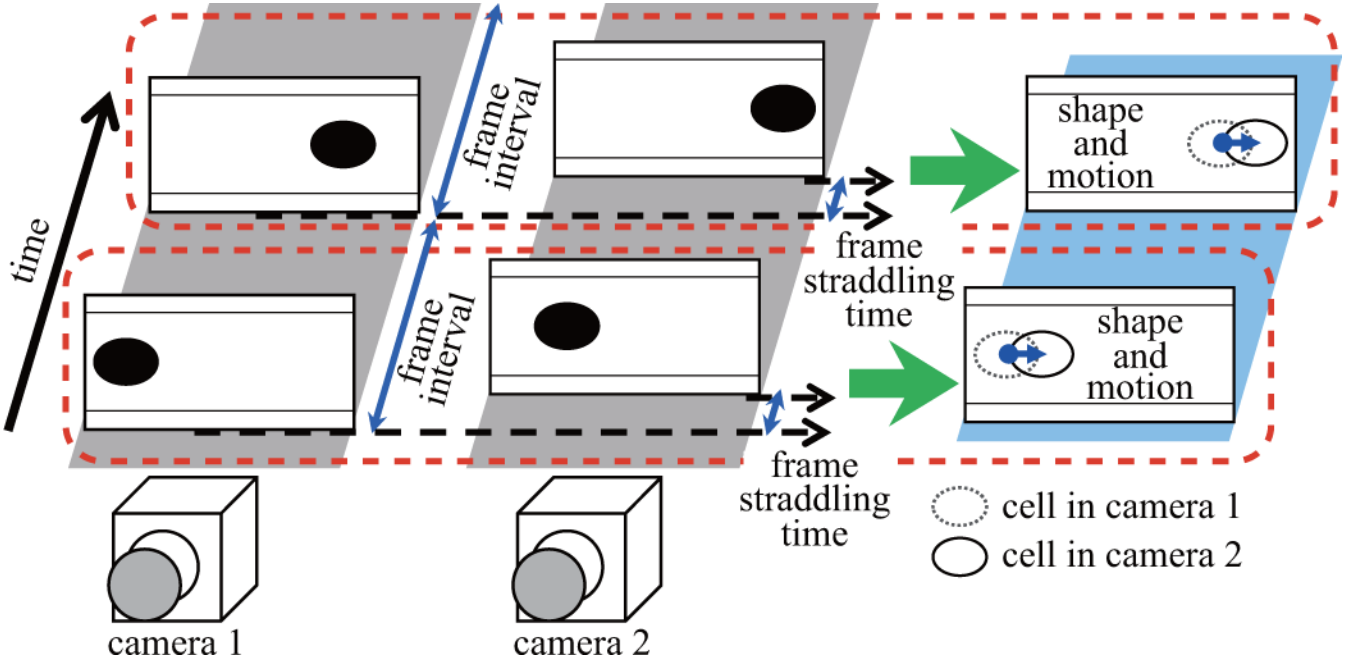 |
Fig. 1: The frame-straddling nultiobject feature extraction concept. |
The system can synchronize two camera inputs with the same view with only a tiny time delay on the sub-microsecond timescale. Real-time video processing is performed in hardware logic by extracting the moment features of multiple cells in 512×256 images at 4000 fps for the two camera inputs and their frame-straddling time can be adjusted from 0 to 0.25 ms in 9.9 ns steps. By setting the frame-straddling time in a certain range to avoid large image displacements between the two camera inputs, our frame-straddling high-speed vision platform can perform simultaneous shape and motion analysis of cells in fast microchannel flows of 1 m/s or greater.
The results of real-time experiments conducted to analyze the deformabilities and velocities of sea urchin egg cells fast-flowing in microchannels verify the efficacy of our vision-based cell analysis system.
System configuration and overview
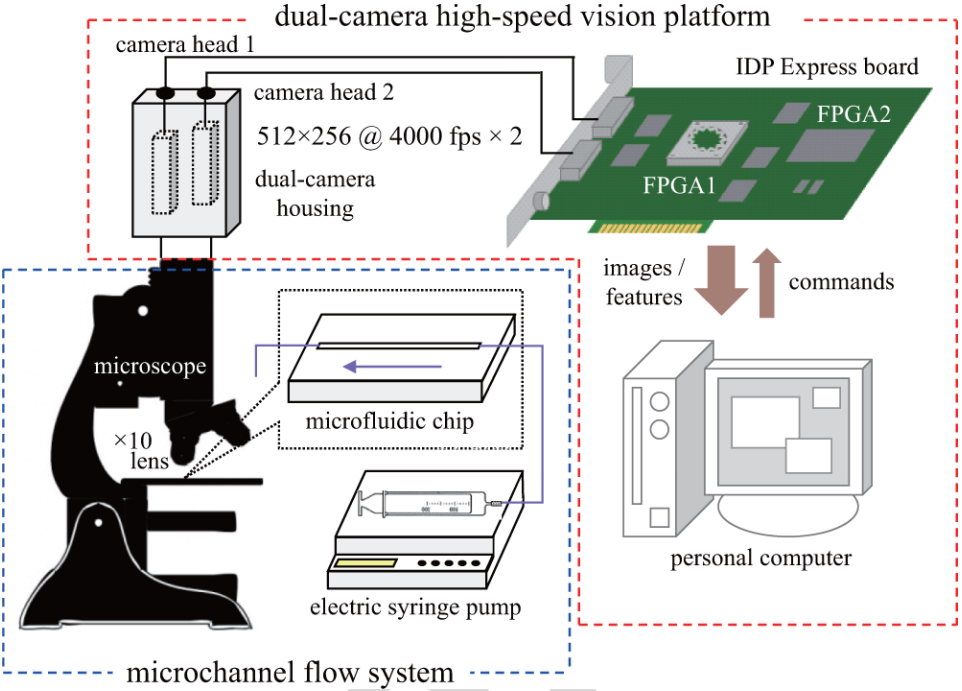 |
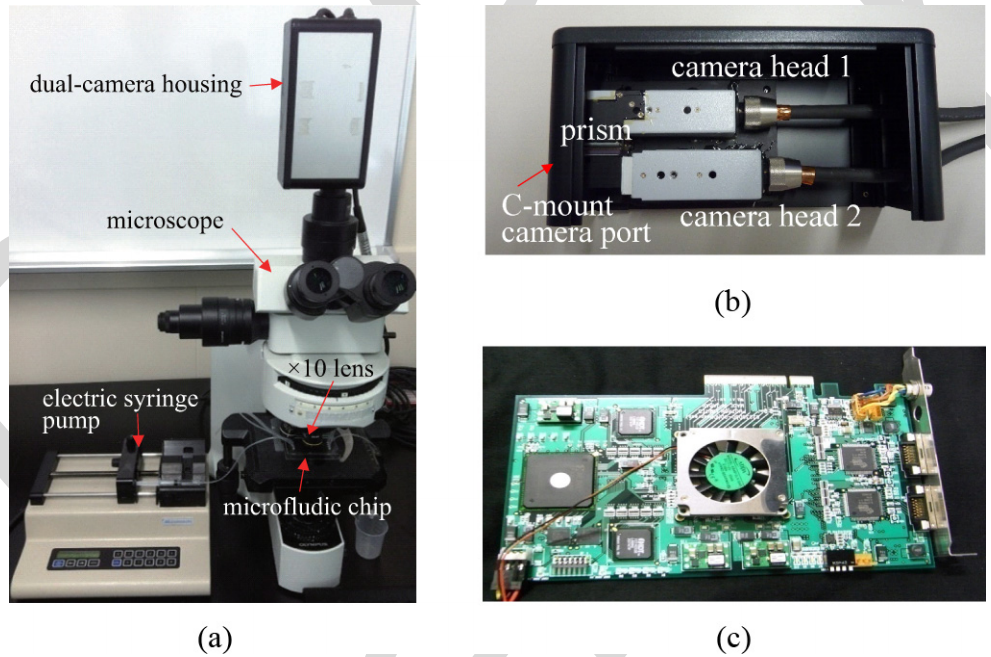 |
Fig. 2: System configuration. |
Fig. 3: System Overview. |
Processing flow
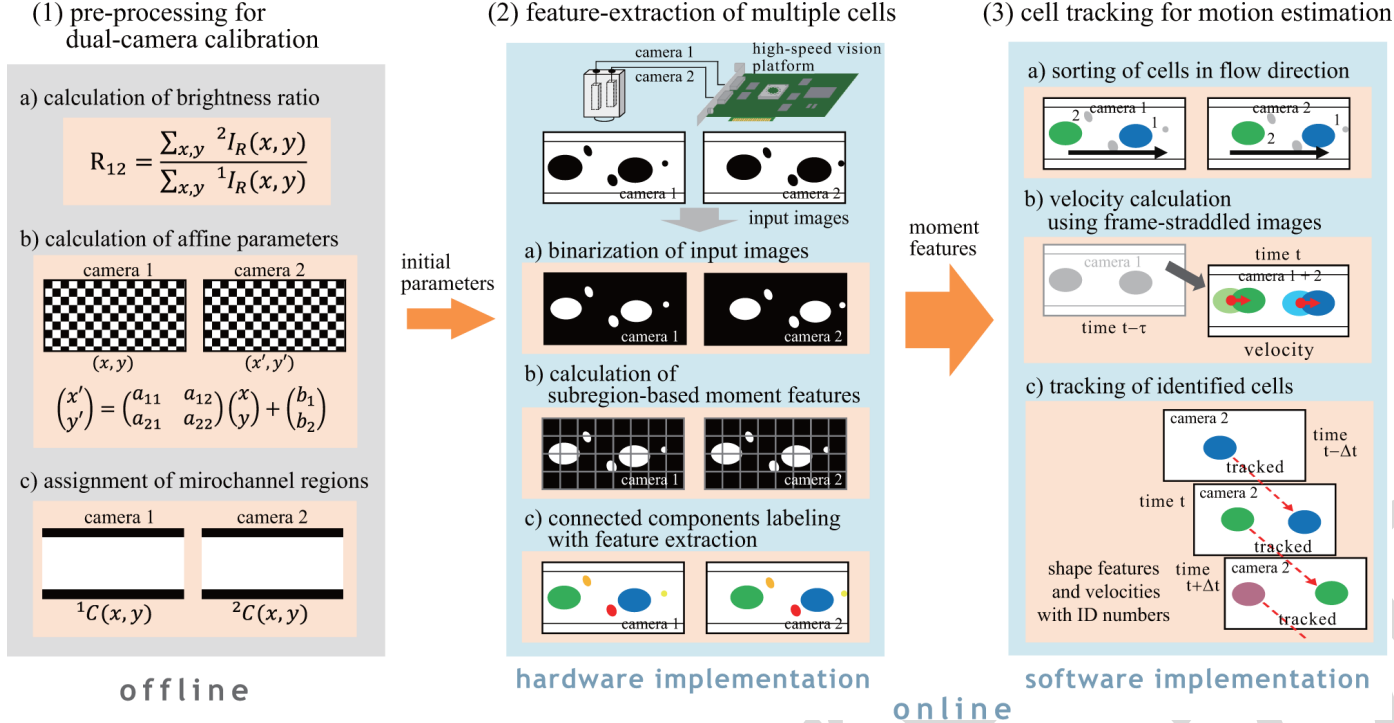 |
Fig. 4: Flow chart of the implemented algorithms. |
Experiment results in I-type microchannel
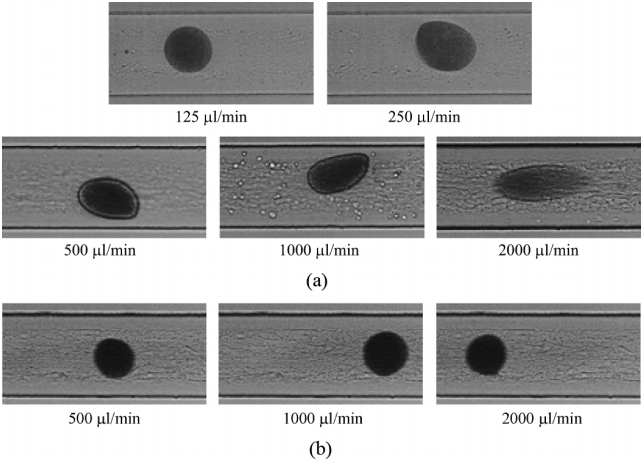 |
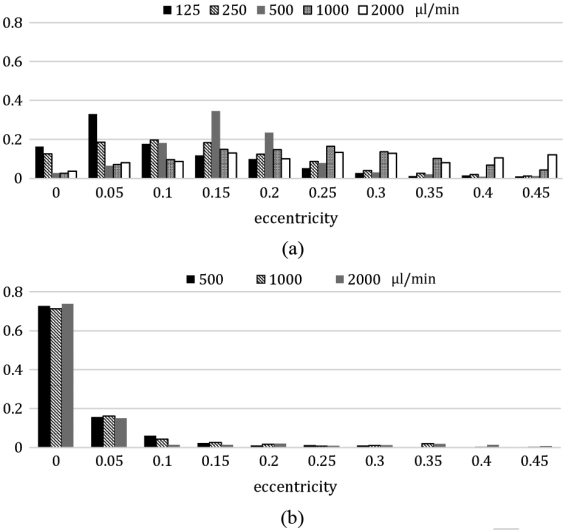 |
Fig. 5: Snapshots of sea urchin egg cells when observing them at different flow rates. (a) One-day-old egg cell. (b) Bouin’s fixed egg cell. |
Fig. 6: Eccentricity histograms for sea urchin egg cells when observing them at different flow rates. (a) One-day-old egg cell. (b) Bouin’s fixed egg cell. |
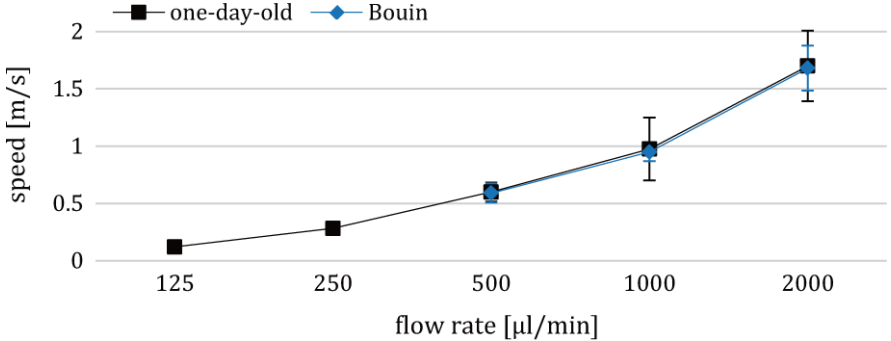 |
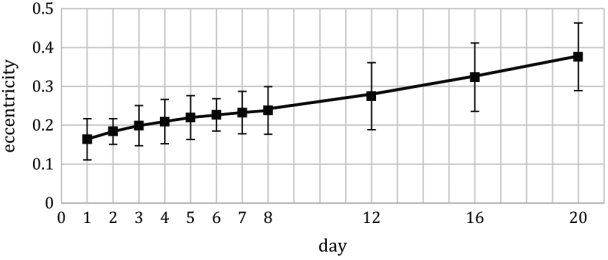 |
Fig. 7: Speeds of sea urchin egg cells when observing them at different flow rates. |
Fig. 8: Eccentricities of aging sea urchin egg cells. |
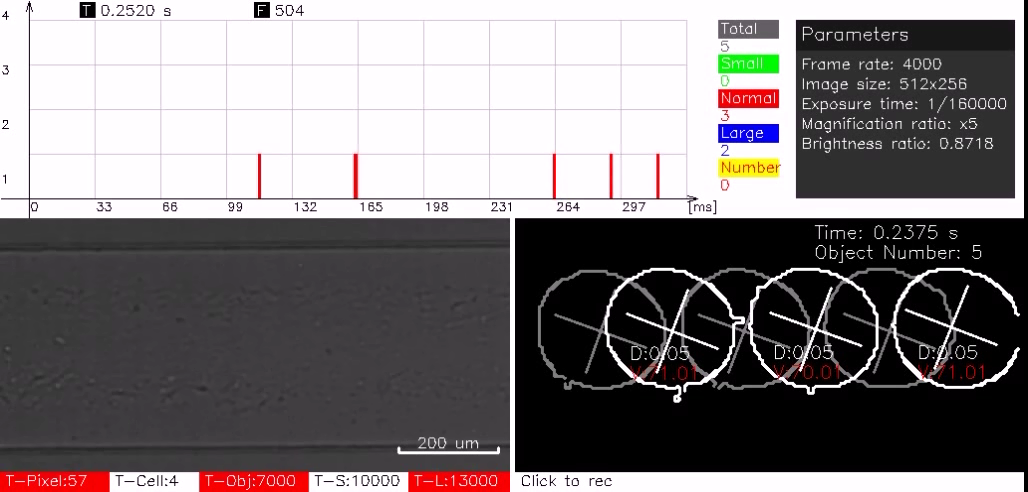 |
WMV movie(21.3M) recorded video for 250 ul/min flow (30/4000 replay) |
Experiment results in L-type microchannel
 |
|
Fig. 9: Eccentricities and velocities of sea urchin eggs flowing in an L-type microchannel at 250 ul/m. |
|
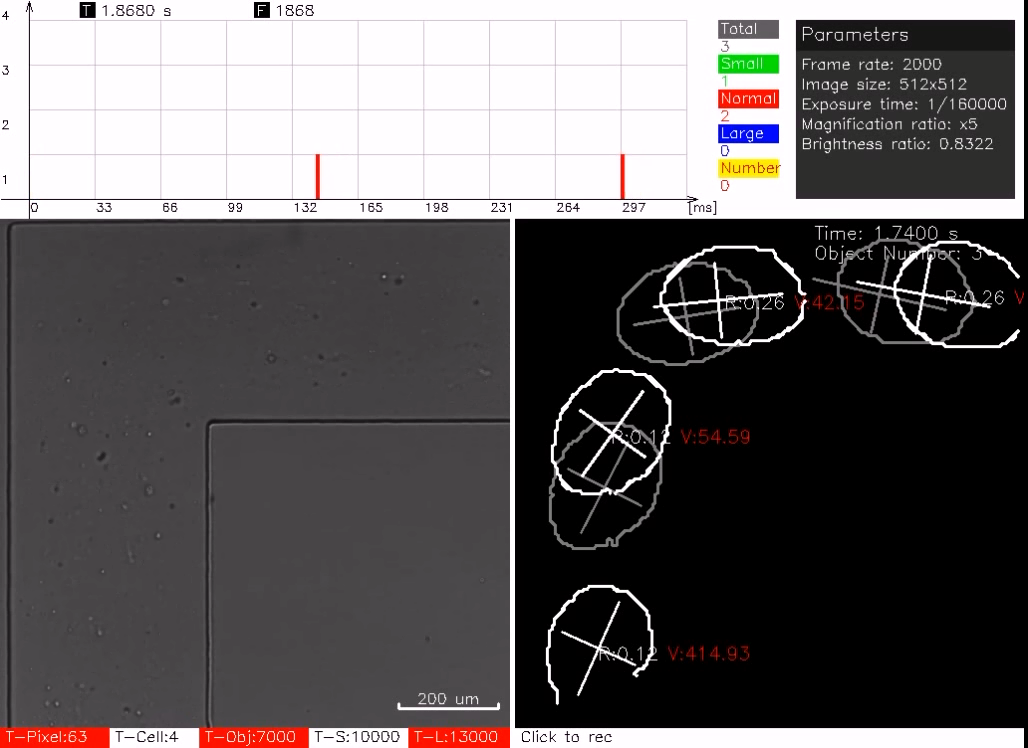 |
MPG movie(5.3M) recorded video for 100 ul/min flow (30/2000 replay) |
